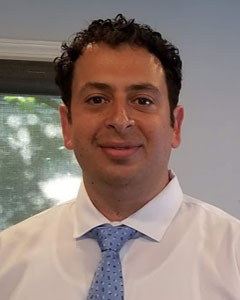Cracked teeth or crooked front teeth present challenges for any dental specialist. The cracks must be located, usually by X-ray, and a cracked tooth repair is performed. The dentists in our dentistry center can fix crooked front teeth and cracked tooth syndrome before these conditions lead to the constant pain.
A fracture, split, or crack running through a tooth can be painful — or it can set the stage for worsening problems for your teeth. The pressure of biting down causes a crack to spread, eventually exposing the tooth’s pulp to temperatures and bacteria. The crack may be located in the tooth enamel or inside the tooth, making it hard to find.
If the crack is internal, you may have few or no symptoms, and your dentist may take a wait-and-see stance. If you’re in pain, however, seek medical attention right away, even on the weekend. Our dentist provides cracked tooth repair to relieve your pain and discomfort. Symptoms of a cracked tooth include:
- You develop sharp pain when you bite down or chew.
- You can only chew on one side of your mouth.
- Your teeth have suddenly become very sensitive to hot and cold.
Evelyn Pena
Google Review
Causes of Cracked Teeth
While tiny cracks are common and usually don’t cause problems, cracks that extend into the dentin or inner tooth can cause painful chewing. The movement of the fluid in the dentin’s microtubules causes pain. Cracked teeth can result from:
- Natural wear and tear
- Trauma to your mouth or face
- Loss of tooth structure due to a large amount of decay
- Chewing on complex objects — such as nuts, hard candy, ice, or foreign objects
- Teeth grinding
- Uneven chewing pressure from a poor bite or loss of another tooth
- Loss of a large amount of tooth structure due to previous dental work
- Exposure of tooth enamel to extremes in temperature too quickly
- Brittle teeth due to a root canal
Types of Cracked Teeth
Regardless of the cause, cracked teeth can lead to severe discomfort and pain if left untreated or worsening teeth conditions. Cracked teeth appear in varying forms of severity, such as:
- Craze lines. These simple fractures of the tooth’s enamel rarely cause pain or cracked tooth syndrome.
- Minor cracks or chips. Minor damage involves the outer layers of a tooth. Cracked tooth repair for this involves bonding with composite resin or fillings.
- Cracks below the gum line. These cracks, though small or superficial, may allow bacteria to get in to cause infection and bad breath.
- Cusp fracture. The points of your teeth are the chewing structure. They’re subject to the most pressure. Cracks in the cusps don’t involve the pulp, so your dentist uses dental crowns or onlays for cracked tooth repair.
- Serious fractures. If the crack is deep or wide enough to involve the pulp, your dentist may recommend a root canal because the pulp may be diseased or damaged.
- Split tooth or a split root. A crack significant enough to split your tooth causes significant pain. Your dentist can sometimes save the larger piece with a root canal and a crown. If the damage is severe, your dentist extracts the tooth. A vertical crack running down into the root often means extraction.
When you visit a dentist, report any changes in your history and habits. That information helps your dentist find the best treatment for you. Cracked tooth repair, especially if caught early, can be quick and keep dental problems from worsening.
Cracked Tooth Syndrome and Treatments
Diagnosis of a cracked tooth is sometimes difficult if the cracks are small or hidden inside a tooth’s structure. It’s sometimes hard to tell which tooth is causing the pain. If you have symptoms of sharp pain while chewing but no visible cracks, your dentist may determine you have cracked tooth syndrome. This usually means there is a crack somewhere, but it’s too small to find on an X-ray.
Because bacteria can enter hidden cracks and damage the pulp of your teeth, your dentist takes a thorough medical history and discusses your dental health habits. After asking questions regarding trauma, teeth grinding, and chewing; your dentist may determine you need a bite adjustment. A search for signs of decay or trauma always follows.
Treatment for cracked tooth syndrome is the same as for a visible cracked tooth. Depending on the size and location of the crack, your dentist performs cracked tooth repair. The exact procedure may include:
- Bonding, especially if the cracks are visible, such as from crooked front teeth cracks
- Filling
- Crown
- Root canal
- Extraction as a last resort
Do you have any questions about the cracked tooth repair? Please contact our advanced dental clinic for consultation for more information or to schedule an appointment with the experienced dentist Farzin Farokhzadeh, DDS of Park Avenue Smiles.

